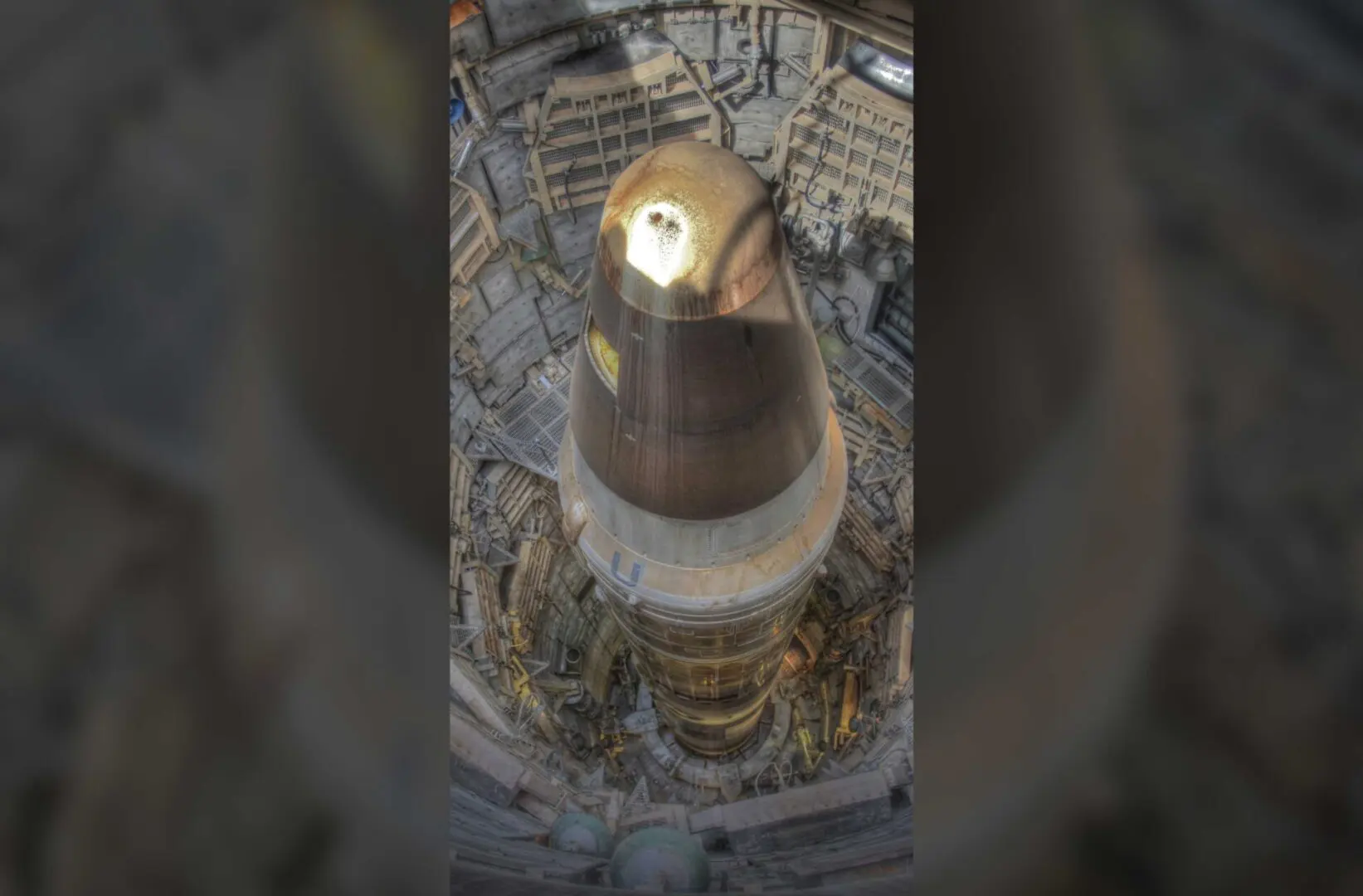AMC Heritage: Titan II Missile Complex 374-7
By MS. KIM KNIGHT, STAFF WRITER
Cold War tensions sparked in 1947 between Stalin’s Soviet Union and the United States following the end of WWII. By 1980, fear of nuclear war gripped the nation as the global superpowers tensely vied for supremacy. In great haste, the adversaries stockpiled nuclear weapons and braced for the worst.
At that time, the Strategic Air Command (SAC) had 54 Titan II intercontinental ballistic missiles loaded with nine megaton W-53 nuclear warheads. To put the magnitude of one nine-megaton blast in perspective, if the warhead was detonated it would have been the equivalent of three times the power of all the explosives used throughout WWII, including the nuclear bombs dropped on Hiroshima and Nagasaki. A Titan II missile could also be launched from a silo in less than 60 seconds, which further added to the ferocity of this weapon of mass destruction.
The 308th Strategic Missile Wing, Little Rock Air Force Base, AR, which fell under the direction of SAC, was responsible for 18 Titan II Strategic Missile sites dispersed across the state and discreetly camouflaged amongst the wooded terrain.
On the evening of September 18, 1980, two young Airmen from the Propellant Transfer System (PTS) team arrived at the Titan II Missile Complex 374-7, outside of Damascus, AR, to conduct a routine pressure check on the oxidizer tank. Once the Airmen entered highly secure codes to gain access to the silo and had descended several flights of stairs to the worksite, they realized that the newly mandated torque wrench needed for the maintenance was still in the truck at ground level. Instead of making the trek back to the truck to retrieve the correct tool, one of the Airmen grabbed a ratchet with an 8-pound socket that he knew would complete the task. Unfortunately, the heavy socket slipped off the ratchet, and the two Airmen watched in horror as it fell 80 feet, bounced off the missile platform, and struck the side of the missile. The force punched a hole in the side of the missile, which caused a deadly cloud of aerozine 50 fuel to leak out.
The seemingly insignificant deviation from a mandated tool set a disastrous series of events in motion. In a short time, warning signals in the control room sounded, but there was no checklist available to aid the Airmen as they scrambled to find a solution for the rapidly deteriorating situation. Desperate calls for guidance and direction went out to leadership and weapons experts across the country.
Stabilizing the 8-story missile to stop a collapse was the prime concern because the aerozine 50 from the bottom tank had leaked out. This catastrophe left the massive weight of the upper tank full of dinitrogen tetroxide and the W-53 Nuclear Warhead unsupported. If the missile collapsed and the fuels made contact, they would spontaneously ignite.
The missile complex was evacuated, but the PTS team bravely stayed, knowing that at any minute, if the warhead detonated, everything living within 20 miles of the site would perish. Selflessly trying to save others, they worked on and at 3:00 a.m. were given orders to reenter the silo to turn on the exhaust fan. SrA David Lee Livingston and Sgt Jeff K. Kennedy entered the silo, and shortly after, the aerozine 50 exploded, sending the 740-ton silo door flying. This blast was followed by another explosion from the tank of dinitrogen tetroxide, which catapulted the W-53 warhead into the air. It landed lose to the complex gate but did not detonate due to a safety feature.
More than 20 individuals were transported for medical care with various injuries from the blast. Kennedy endured severe burns and respiratory problems from inhaling toxic fumes in the silo, but he survived. Livingston suffered fatal injuries, and enroute to the hospital, he said, “Please, don’t tell my mom.†Her pain lasted far beyond the morning of September 19 when her only son took his last breath.
Forty years after the incident, the Airman who mistakenly dropped the socket stated he has replayed the events of that night over and over in his head, every single day. Sadly, the perpetual loop has offered no atonement.
The next time you reach for a tool to perform your work duty, think about the Airmen in Missile Complex 374-7 and know that you can potentially prevent a deadly series of unfortunate events simply by adhering to mandated guidance.

